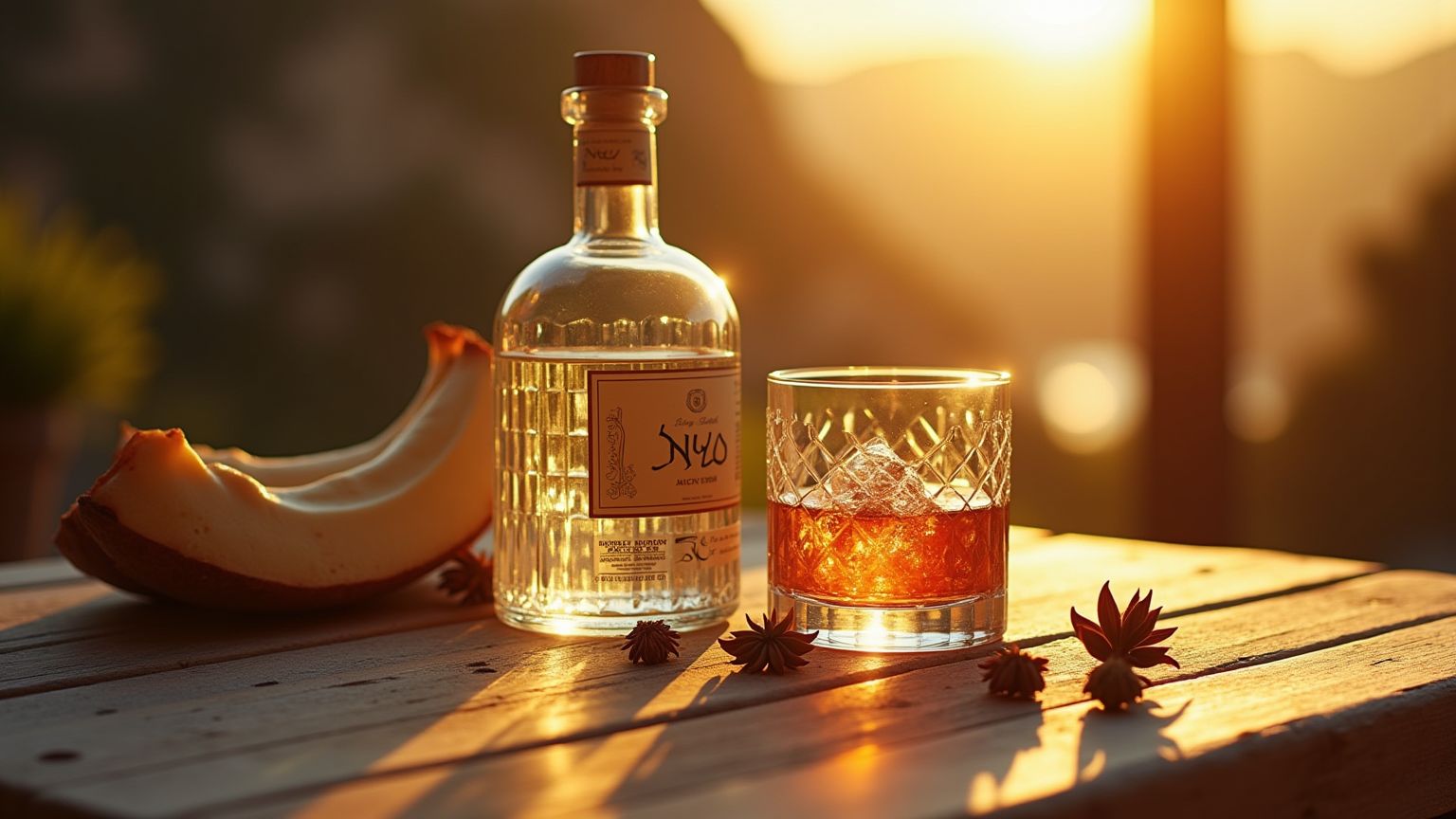The Complete Guide to Ouzo: Greece’s Iconic Anise Spirit
Hell, I've spent fifteen years dragging curious tourists through the tavernas and hidden gems of Greece, and if there's one thing I've seen over and over, it's the wide-eyed wonder when someone tries ouzo for the first time. Some folks approach this anise-laced elixir like they're about to wrestle a bear, others with childlike curiosity—but almost everybody walks away with a newfound love affair with our national firewater.
Whether you're packing your bags for Santorini or just want to understand what the fuss is about, consider this your backstage pass to the world of ouzo.
What Is Ouzo? Understanding Greece's National Drink

Ouzo isn't just another boozy option in Greece—it's practically written into our DNA. After countless food tours across sun-drenched islands, I can tell you ouzo transcends its classification as a mere alcoholic beverage. It's the liquid embodiment of "come, sit, stay awhile."
In bare-bones terms, ouzo is a dry anise-flavored aperitif that screams "GREEK!" with every sip. We're talking about a distilled spirit that typically packs a punch at 37.5% to 44% alcohol. What sets ouzo apart from other anise-based hooches around the world? It carries a protected designation of origin—meaning if it ain't made in Greece according to specific rules, it ain't ouzo, period.
The drink has been hanging around Greek culture since the 14th century when folks under Ottoman rule started getting fancy with distillation. But the ouzo we knock back today really took shape in the 19th century, with places like Lesbos island and Tyrnavos city becoming the spiritual homes of this spirit.
When I drag visitors into those tiny, family-run ouzeries hidden in Plomari or tucked away in Athens' labyrinthine backstreets, I hammer home one point: ouzo isn't something you slam back like a college kid—it's an experience you surrender to. The ritual—sipping slowly, nibbling on mezedes, talking absolute rubbish with friends for hours—that's the beating heart of Greek social life.
What Is Ouzo Made From? The Artisanal Production Process
I've stumbled through more ouzo distilleries than I can count over these fifteen years, and I've picked up a few trade secrets along the way. The birth of this cloudy marvel is nothing short of alchemical poetry.
The foundation of any respectable ouzo starts with agricultural alcohol (usually squeezed from the souls of Greek grapes) that's run through copper stills with anise seeds and a secret handshake of herbs and spices. Every ouzo producer guards their recipe like my grandmother guards her moussaka technique—with terrifying intensity.
Here's what typically goes into the pot:
- Base hooch: Must be agricultural in origin—usually neutral grape spirits
- Star anise: The headliner that brings that distinctive licorice punch
- Fennel seeds: The backup singer that amplifies the anise notes
- Coriander: Sneaks in with subtle citrusy undertones
- Cardamom: Adds that "what's that interesting note?" complexity
- Cinnamon: Contributes a warm hug in some regional recipes
- Mastika: A pine-like resin that some producers swear by
- Mint: The occasional wild card for freshness
I've watched leathery-faced master distillers hover over their copper stills like nervous parents, monitoring every belch and bubble as alcohol vapors dance through botanical chambers. The magic happens in these moments—when spirit meets herb.
What makes each ouzo its own beast is the proprietary blend beyond the mandatory anise. Some get distilled once and call it a day, while the premium stuff might go through multiple cycles, emerging smoother than a con artist's pickup line.
They'll add water afterward to bring the alcohol down to the desired strength, followed by a brief nap before bottling. Unlike whiskey or rum, ouzo doesn't improve with decades of aging—its character comes from ingredients and process, not time.
A hot tip I share with my tour groups: look for bottles labeled "100% distilled" when selecting ouzo. These beauties are generally superior to the cheaper versions made by simply mixing alcohol with flavoring agents.
How to Drink Ouzo Like a Local Greek
"How do I drink this stuff without embarrassing myself?" is probably the question I hear most often, right after "Where's the bathroom?" The answer reveals volumes about Greek attitudes toward pleasure and social connection.
First things first—drinking ouzo without food is like showing up to a wedding naked. We just don't do it. The mezedes (small plates) tradition isn't optional; it's baked into the ouzo experience.
Here's my no-nonsense guide to drinking ouzo like someone who actually knows what they're doing:
The water dance: You'll get a small glass of ouzo alongside cold water and maybe some ice. Pour water into your ouzo—not the reverse—at roughly 1:1 or 2:1 (water to ouzo) depending on how much you value remembering your evening.
The magic trick: Watch as the clear liquid transforms into a milky cloud. This "louche" effect happens because anise oils are soluble in alcohol but throw a tantrum when water shows up, creating that distinctive cloudy appearance.
Sipping, not shooting: For the love of all things holy, don't knock it back like tequila. Ouzo demands to be sipped slowly, savored over hours of conversation and laughter.
Feed the beast: Pair with these traditional mezedes:
- Octopus, charred within an inch of its life on a grill
- Tiny fried fish you eat whole, heads and all
- Feta cheese drowning in olive oil and oregano
- Plump, purple Kalamata olives
- Tzatziki that'll make your breath fear-inducing but worth it
- Vegetables that have met a grill and lived to tell about it
- Tomatoes that actually taste like tomatoes (not those pale supermarket imposters)
Temperature matters: Serve ouzo cold, but adding ice directly is considered slightly criminal. Ice melts, dilutes, and dulls the complex flavors of quality ouzo.
Embrace the slow lane: We have this concept called "ouzo time"—where minutes stretch like warm taffy and nobody's watching the clock. It's the anti-hustle.
During scorching summer afternoons when I'm shepherding sunburned tourists through coastal villages, we collapse into seaside tavernas for what I call "the ouzo salvation." Sitting under vine-covered pergolas, Mediterranean breeze tangling hair, condensation dripping down chilled ouzo glasses while picking at just-caught seafood—this is the moment visitors realize they're experiencing something authentic.
What Does Ouzo Taste Like? A Flavor Profile
I've watched thousands of ouzo virgins take their first sip, and the facial expressions range from "I've seen the face of God" to "Did I just drink liquid licorice punishment?" But what's actually happening on your palate when you sip this polarizing elixir?
The headliner is undeniably anise—a potent licorice-adjacent flavor that announces itself without apology. But any decent ouzo offers more nuance than a simple licorice bomb. The good stuff delivers a complex symphony that might include:
- Anise: The star of the show—like licorice but fresher, more herbal, less candy-store
- Fennel: A softer, greener version of the anise punch
- Herbaceous undertones: Whispers of mint, sage, or whatever the distiller smuggled into the still
- Spice ribbons: Gentle warmth from cinnamon, perhaps cardamom if you're lucky
- Citrus ghosts: The best ouzos have subtle citrus peel notes dancing in the background
- Perceived sweetness: Not actually sweet, but the anise compounds play tricks on your brain
- The alcohol handshake: A warming hello, significantly gentler when water joins the party
Adding water doesn't just change ouzo's appearance—it completely remixes the flavor profile. Water opens the spirit up like therapy, softening the alcohol's edge and coaxing shy botanical notes into the spotlight.
What blindsides most first-timers is how a quality ouzo, properly diluted, feels almost silk-like on the tongue. Unlike spirits that fight dilution, ouzo embraces water, transforming into something remarkably approachable.
For anise skeptics on my tours, I always push the seafood pairing before they make any hasty judgments. There's something almost magical about ouzo with fresh-caught fish—the herbal, clean character of the spirit functions like a squeeze of lemon, brightening the entire eating experience.
What Does Aperitif Ouzo Smell Like? The Aromatic Experience
The nose knows—and with ouzo, the aromatic journey is half the experience. During tasting sessions with wide-eyed tourists, I always insist they spend time sniffing before sipping.
Straight ouzo unleashes a powerful aromatic uppercut—anise-forward with alcoholic heat that makes nostrils flare. The scent signature is unmistakable: sweet, intensely herbal, and distinctly Mediterranean. You might catch whiffs of licorice candy, star anise tea, and fennel gardens.
But add water—watch that mystical cloudy transformation—and the aroma shape-shifts dramatically. The alcohol vapors retreat, and the botanical ballet begins. The scent becomes gentler, rounder, with anise revealing complex layers previously masked by ethanol.
What fascinates me is how ouzo's aromatic profile varies by producer and region. Lesbos ouzos often punch you in the nose with pure, intense anise, while mainland varieties might weave in herbal or citrus threads that make you wonder what exactly you're smelling.
The full sensory package includes the environment too. In proper ouzeries, the anise perfume mingles with charcoal-grilled octopus, olive oil drizzles, and that indefinable Mediterranean sea breeze. This aromatic cocktail becomes part of the memory—the complete ouzo experience.
I've had countless former tour guests email me years later saying they caught a random whiff of anise somewhere and were instantly teleported back to a whitewashed taverna in Greece. That's the time-travel power of ouzo's distinctive scent.
Regional Variations and How to Choose Quality Ouzo
After dragging curious drinkers through every corner of Greece, I've noticed most visitors have no clue about the regional differences in ouzo. Like wine, ouzo is influenced by terroir and local tradition—each area has its own approach to this anise-forward firewater.
Lesbos island stands tall as the undisputed heavyweight champion of ouzo production, with Plomari town being particularly hallowed ground. Lesbos ouzos tend to be unapologetically anise-dominant with a clean, focused profile that purists drool over. The local distilleries—some run by the same families since your great-grandparents were in diapers—use spring water that supposedly gives their ouzo an edge.
Meanwhile, mainland Tyrnavos marches to its own beat, often incorporating a broader botanical palette for more complex flavor. These ouzos sometimes feature subtle mastika notes (a resinous flavor from mastic trees) that add a distinctive pine-like dimension.
When tourists beg me to help them select a bottle to smuggle home, I point them toward these quality indicators:
Look for "100% Distilled": This means it was properly distilled with actual botanicals, not just factory flavorings dumped into neutral alcohol.
Alcohol sweet spot: The premium stuff typically lands between 40-45% ABV—strong enough to extract full botanical flavor but not so strong it burns your face off.
Established names: While I love supporting small producers, brands like Barbayanni, Plomari, and Mini have earned their reputation over generations for a reason.
Geographic pedigree: Products specifically from Lesbos (especially Plomari) and Tyrnavos often represent the gold standard.
Visual clarity: Before water enters the picture, quality ouzo should be crystal clear—no floating bits, no cloudy appearance.
I always encourage my groups to sample several different ouzos during their Greek adventures. Many traditional tavernas serve ouzo by the karafaki (adorable little carafes), letting you try local products that rarely make it to export markets.
Conclusion: Embracing the Ouzo Experience
After fifteen years of watching visitors fall under the spell of Greece's national spirit, I've realized that understanding ouzo is like having a skeleton key to Greek culture. This cloudy, anise-laced potion embodies our values—hospitality without rushing, pleasure without guilt, and the sacred act of breaking bread (and opening bottles) with friends.
Whether you're planning to island-hop through the Aegean or just want to create a slice of Greek magic at home, remember that ouzo transcends the liquid in your glass. It's about crafting a moment—connecting with flavors, with people, with a tradition older than any of us.
Next time you pour yourself some ouzo, add that splash of cool water, marvel at the milky transformation, and slow the hell down. Pair it with simple, unfussy food that lets the ouzo shine. Most importantly, surrender to "ouzo time"—that magical space where watches stop and only the present moment matters.
Yamas! (That's "cheers" for you non-Greeks. Now drink up!)
🏛️ Ready to Experience Greece First-Hand?
Turn your Greece knowledge into unforgettable memories with our authentic local tours
🍷 Taste Authentic Greece
Experience Greek culture through its incredible cuisine and culinary traditions








